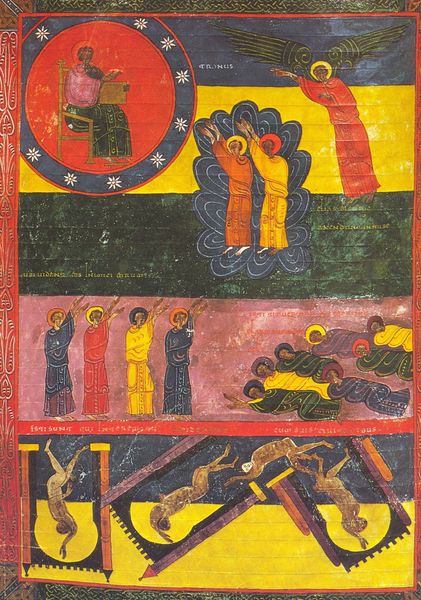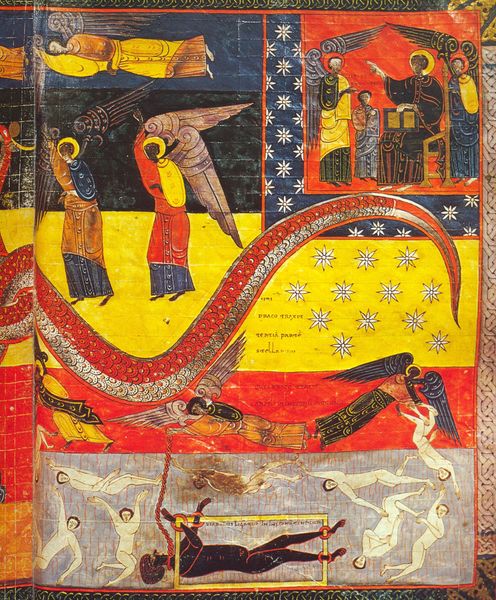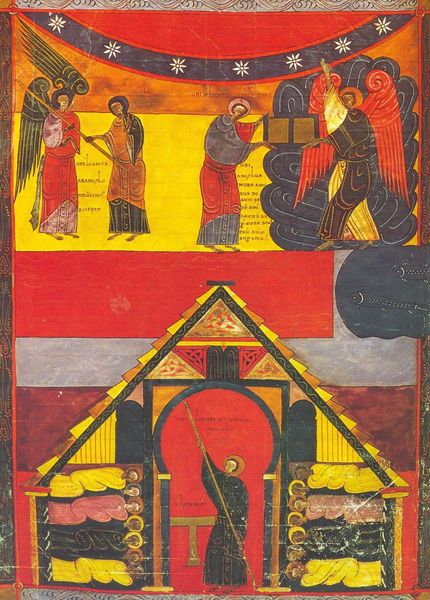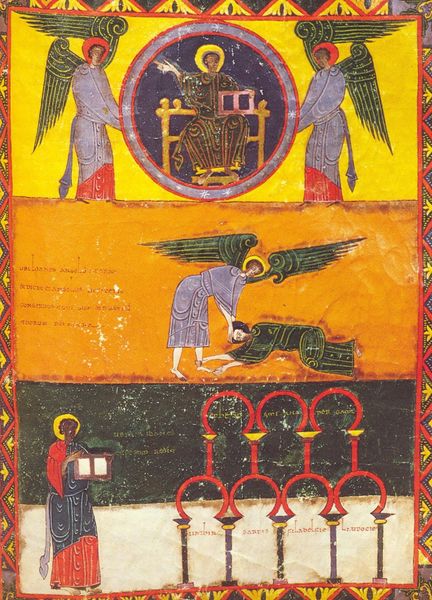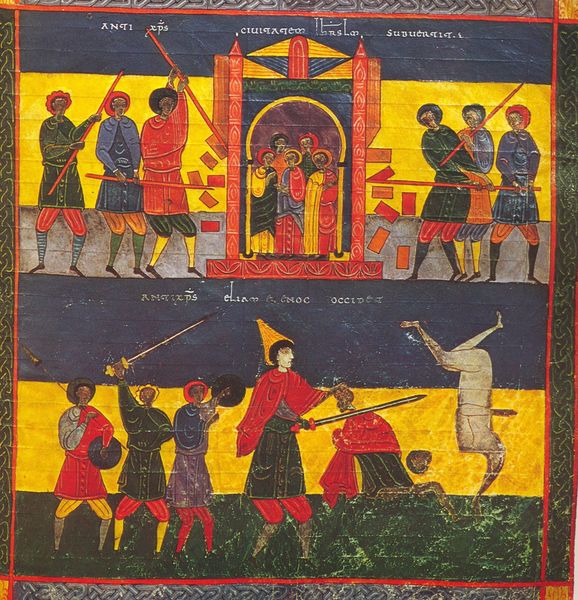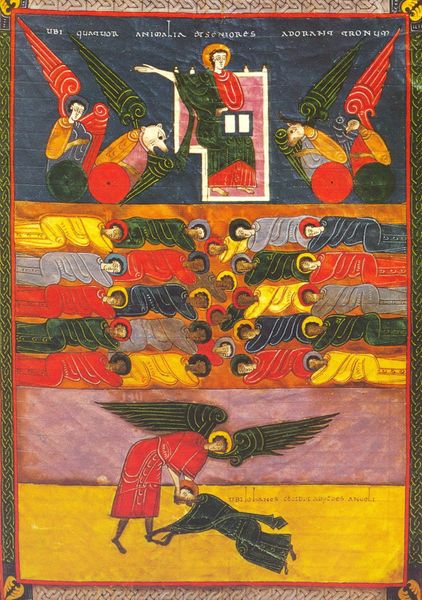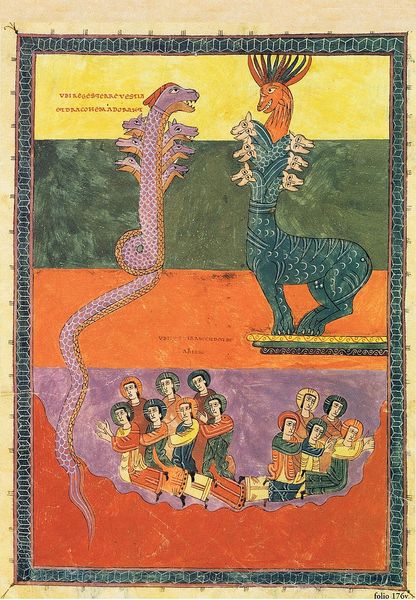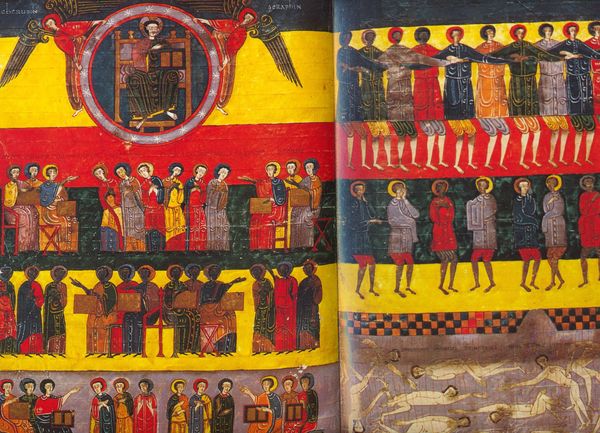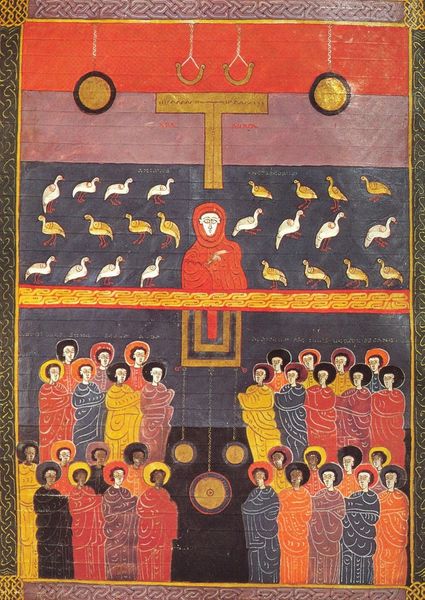
tempera, painting
#
byzantine-art
#
medieval
#
tempera
#
painting
#
stain glass
#
figuration
#
history-painting
Copyright: Public domain
Curator: Here we have a work called "Les trois Anges. La chute de Babylone. Apoc. XIV," crafted with tempera. The artist known as Facundus is credited for this painting. What are your first thoughts? Editor: The visual organization strikes me immediately. The artist uses distinct registers to depict the narrative—celestial beings, earthly figures, and those falling below, literally. It feels urgent. Curator: It's a medieval piece, very likely tied to illuminated manuscripts depicting biblical scenes. The Byzantine art influences are strong—look at the stylized figures, the symbolism, and the flattened perspective. It really emphasizes the otherworldly nature. The composition guides the viewer through a theological message. Editor: Exactly. That verticality reinforces the hierarchy inherent in the text: Angels presiding, righteous standing firm, sinners tumbling. But the "fall" isn't merely visual. The image evokes societal structures, questioning who is cast out and why. What criteria determines divine grace, or lack thereof? Curator: Facundus was working within very strict iconographic traditions, which provided artists with a vocabulary and framework. However, despite the restrictions, individual interpretation shines through. For example, this work is quite emotive compared to the common stoicism of Byzantine figures. Editor: It also forces us to confront uncomfortable questions about the construction of morality. Who defines Babylon, its sins, and how that affects who gets cast out? In a world where identity is constantly policed, who sits among the ‘righteous'? This isn’t just medieval history; the anxieties echo into current struggles against systems that categorize and exclude. Curator: Yes, it's an eternal concern in human society: judging others and deciding who belongs. How are such divisions enforced within institutions, throughout art history? That tension between rigid structures and questioning, subversive undertones are interesting when analyzing such art. Editor: Precisely. By drawing links between art historical context and today's ongoing discussions, we find how these visuals maintain relevance beyond the constraints of Facundus' original scope. Curator: Thank you, it has given me much to consider from your perspective. Editor: Likewise. Art can bring such dialogues together.
Comments
No comments
Be the first to comment and join the conversation on the ultimate creative platform.
